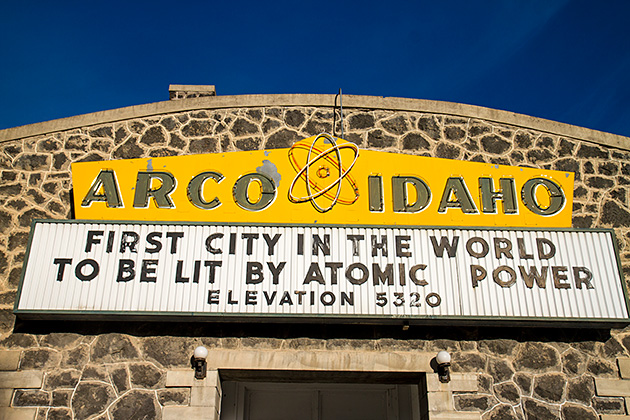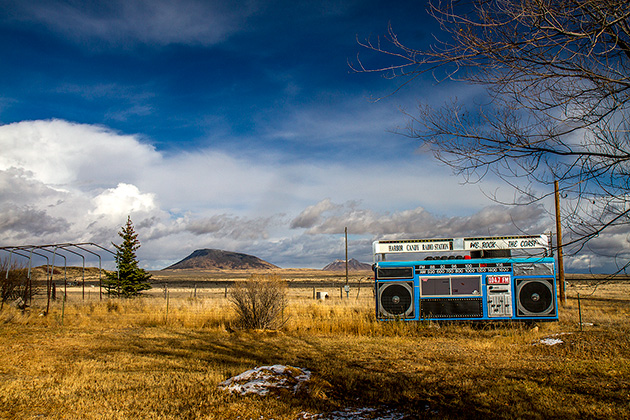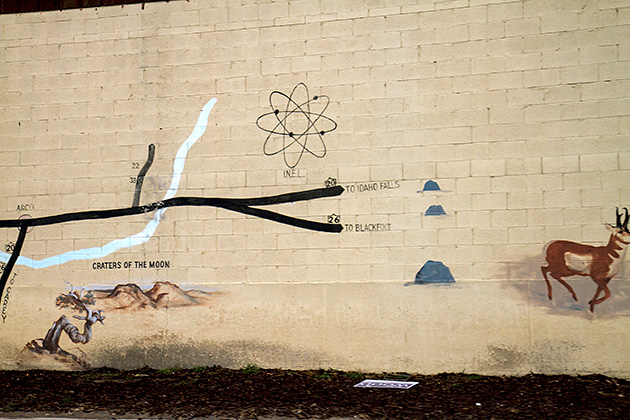Arco, Idaho First City to be Powered by Nuclear Power and Atomic City, Idaho... Strange
ARCO AND ATOMIC CITY
In 1955, tiny Arco won fame as the world’s first nuclear-powered city. Today, it mainly serves as a jumping-off point for excursions into the nearby Craters of the Moon National Monument. Arco is one of Idaho’s strangest little towns, although nearby Atomic City manages to be even stranger. And littler.

Besides the lava-scorched earth to the south and a range of mountains to the north which include both Idaho’s highest peak (Mt. Borah) and its most awesomely-named (Appendicitis Hill) the most striking feature of Arco is its “Hill of Numbers”. For decades, the senior classes of the local high school have been decorating the nearest mountain with the last two digits of their graduation year. Graffiti on a grand scale.
Arco’s story has been tied to nuclear power ever since our country started experimenting with it. The reason that the government chose this corner of eastern Idaho as one of its nuclear sandboxes is fairly self-evident. Remote and sparsely-populated, Arco is the kind of place that a nuclear accident might go unnoticed. Or at least under-reported. Case in point: did you know that the USA’s only fatal nuclear accident occurred in Arco, Idaho? In 1961, there was a core meltdown in the National Reactor Testing Station which killed three servicemen. [Uncle Sam clutches his chest in mock concern… “Oh, you didn’t know about that?”]
BOGIAD
Thirty miles to the southeast, Atomic City is even more closely associated to nuclear power than Arco. A ghost-town for all intents and purposes, Atomic City still clings to life with a bustling population of 29. We cruised slowly down the town’s only street and were vaguely creeped out. Although we didn’t see a soul, I was certain that radiation-scarred monsters were watching us hungrily from behind curtained windows, and refused to get out of the car. Jürgen chanced it, for a picture of a trailer that had been designed to look like a boombox.

Jürgen, boom-box trailers are how the mutants lure you in!
Close by Atomic City is the Experimental Breeder Reactor I (EBR-I), a nuclear plant decommissioned in 1964 and today designated as a National Historic Landmark. The world’s first atomic-powered electricity was generated here and, during the summer, you can tour the interior of the plant
We contented ourselves with examining the prototype reactors from the Aircraft Nuclear Propulsion project. This attempt to build nuclear-powered was a failure, abandoned in 1953, but it left behind some marvelous pieces of engineering to admire.
Idaho National Laboratory
INL is the nation’s lead laboratory for nuclear energy research, development, demonstration and deployment and we are engaged in the mission of ensuring the nation’s energy security with safe, competitive and sustainable energy systems and unique national and homeland security capabilities.
INL is part of the U.S. Department of Energy’s complex of national laboratories. The laboratory performs work in each of the strategic goal areas of DOE: energy, national security, science and environment.INL is managed by Battelle Energy Alliance for the Department of Energy’s Office of Nuclear Energy.
INL-The 890-square-mile (2,300-square-kilometer) site is about 50 miles (80 kilometers) west of Idaho Falls and includes the Idaho National Laboratory. The lab area sits atop the Lake Erie-sized Snake River Plain Aquifer, which started becoming contaminated from the nuclear site in 1952, according to a U.S. Geological Survey report released last year.
Sometimes called "The Devil Boat" prompted by a quote from Revelations Chapter 13: "And I stood upon the sand of the sea, and saw a beast rise up out of the sea . . . Here is wisdom. Let him that hath understanding count the number of the beast: for it is the number of a man; and his number is 666."
USS Hawkbill was built by Mare Island Naval Shipyard and launched on April 12, 1969. She is a Sturgeon (637) Class Fast Attack Submarine. Length is 292 feet; beam is 32 feet, displacement is 4060 tons; crew is 120 men. The last of the Sturgeons, she officially was decommissioned 3/15/2000 and was scrapped soon thereafter. The sail was shipped to the Idaho Science Center in Arco, Idaho to be part of a museum.
 |
| Arco, Idaho Map showing Nuclear Waste Site and Craters of the Moon National Monument from Arco. |














Comments
Post a Comment
Your comments are welcomed.